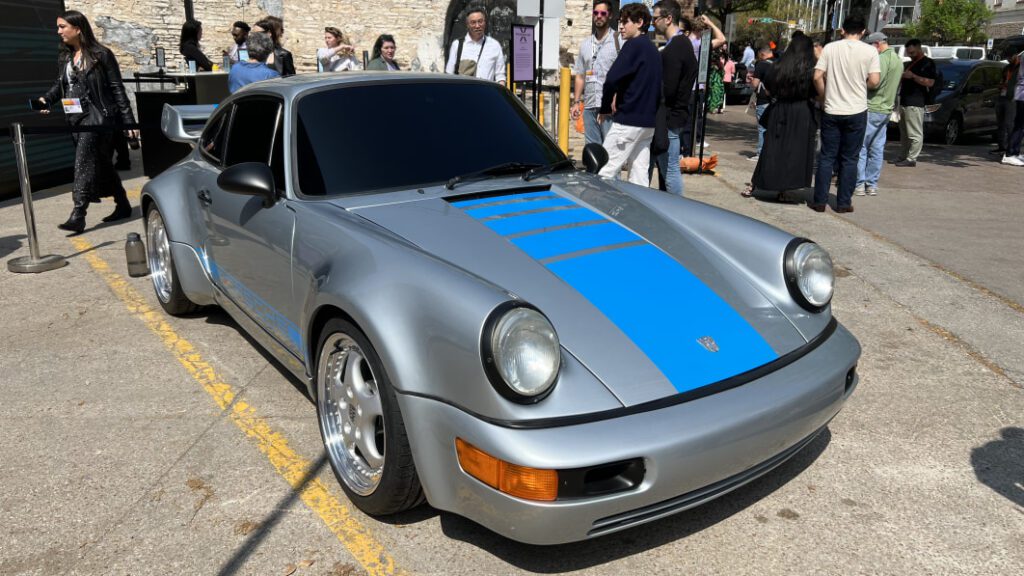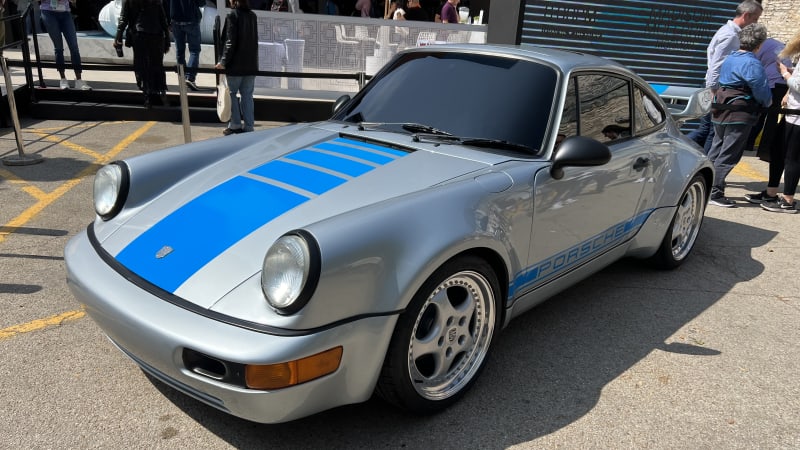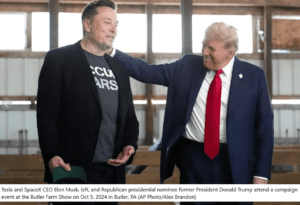How Porsche created a rare Mirage for the next 'Transformers' movie

AUSTIN, Texas — Cool cars are essential to the “Transformers” movie franchise, with vehicles such as the Chevy Camaro inextricably connected to Autobots characters such as Bumblebee. The star car of the latest installment, “Transformers: Rise of the Beasts,” out June 9, is the rare and revered Porsche 911 Carrera RS 3.8, which transforms into the cocky Autobot Mirage voiced by Pete Davidson.
Little is known about the movie and Mirage other than what fans could glean from a 30-second teaser for the film that debuted during the recent Super Bowl. But it’s clear the silver and blue-striped classic Porsche has a starring role since it’s the ride of leading man Anthony Ramos, and that it can create multiple versions on itself to evade police and likely any Decepticons in pursuit.
At South by Southwest in Austin, Texas, this past weekend, the movie’s producer and several principals from Porsche who supported the making of the film shared a stage and revealed a bit more about the iconic car’s role and what it takes to prepare a classic Porsche for the rigors of a big-budget action movie.
Only 55 1993 Porsche 911 Carrera RS 3.8s were built as a one-off homologation special for the 3.8 RSR racecar, and the model has sold for more than $1.5 million at auction. So replicas had to be built for the movie. “We wouldn’t want to wreck a historic car like that,” said Owen Shively, CEO of RTTM, which represents Porsche Cars North America in entertainment and product placement.
Shively oversaw building of the 911 Carrera RS 3.8 replicas. “I’ve never even seen one, but I had to go out and make five of them in a very short order,” he said. It helped that, while the 911 Carrera RS 3.8 is unique, it shares a chassis with 911s across more than three decades.
“It has the same general shell,” said Shively. “What allows us to do that is the 911 tub from 1965 to 1998. You can use that base and build it into a RS 3.8.”
When it came to sourcing parts to create authentic replicas for the movie, which is set in 1994, it also helped that Shively knows 1990s Porsches and a lot of their owners. “I was fortunate that in the ‘90s I worked at a Porsche shop in Reno called Sport Haus managing the parts department,” Shively said. “With my background in motorsports and with Porsche, we were able to go to owners and find spare parts. People just opened their garages to us.”
“That’s a very unique thing,” film producer Lorenzo di Bonaventura said. “I’ve worked with a lot a brands, but the passion of the Porsche owners and their willingness to give was amazing — and we benefited from it. I’ve never seen that kind of enthusiasm for something they own.”
Keeping the replicas running and ready for Mirage’s scenes was another challenge. “We brought in technicians from Porsche so that if something went wrong, they could work on them on the spot and maintain them overnight so that production would keep rolling,” said Scott Baker, director of marketing communications for Porsche Cars North America.
The location call time was typically 3 a.m., Baker added. “And this isn’t a single day, but over weeks that they’re adjusting to something that may happen in a shot sequence and if a car needs to be fixed.”

“And it wasn’t just a matter of weeks, but across three countries where the film was shot – and we beat the hell out of them,” added di Bonaventura. “With a big Hollywood movie like this, losing a day of production can cost anywhere from $250,000 to $500,000. If a car doesn’t work, it’s a big problem. There was a lot of pressure on Porsche to keep the cars running because it’s the marquee vehicle when you see the movie.”
Each car also had a specific role during filming, Shively said. “One had to go backwards, another had to jump. They’re all designed as a specialist and had to perform under extreme conditions.”
“We approached it like a competition situation, just like coming into a pit stop when you have to turn the cars around and get them back out,” said Shively. “Between takes, they have to come off set and go back to keep production going.
“If you approach filmmaking the same way you approach motorsports,” he said, “then you’re always going to win.”





